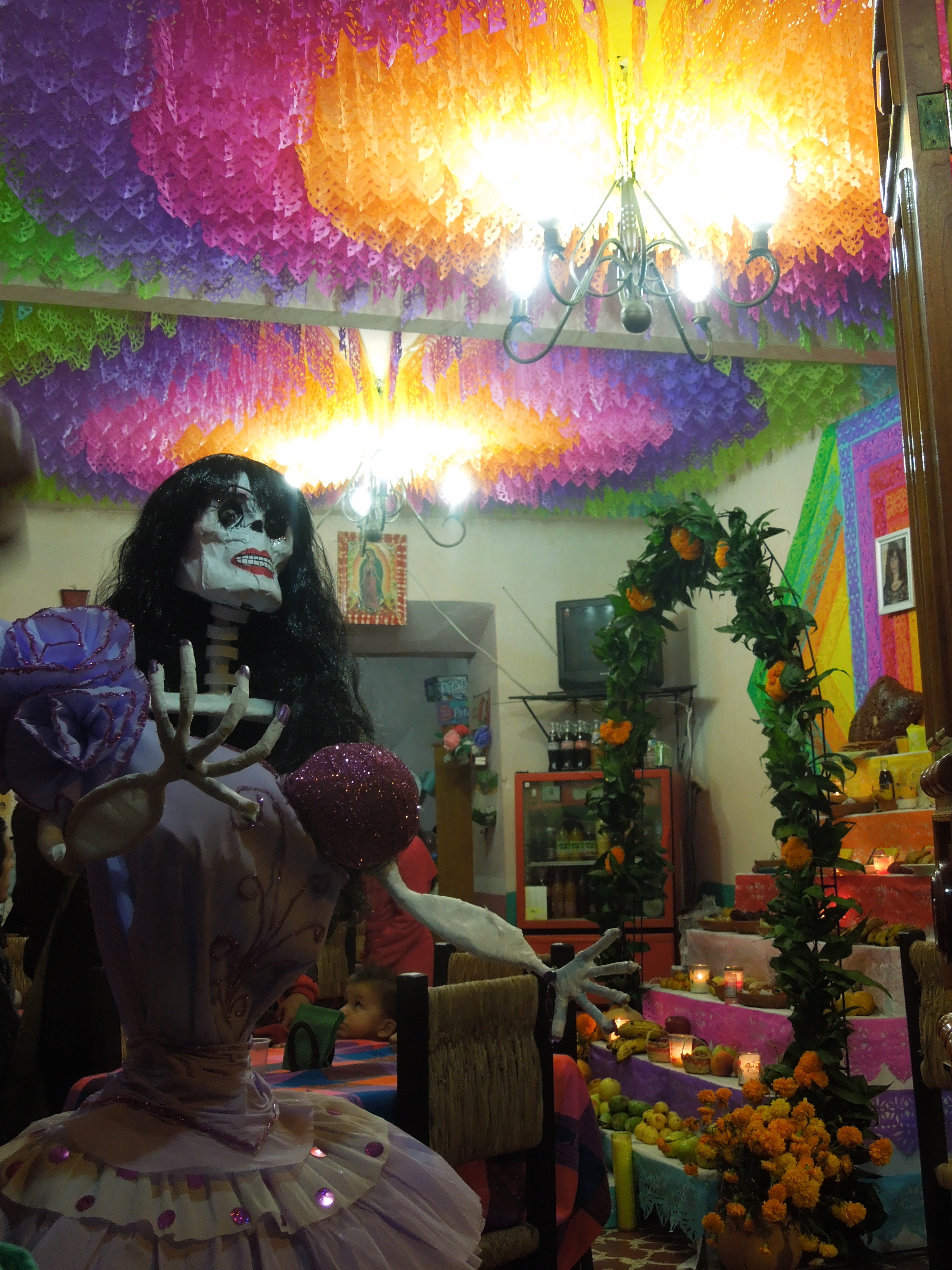Other than the New Orleans funeral, paying homage to the dead just isn’t much fun in the USA. Mexicans, on the other hand, know how to brighten up the experience, and they do so every year for Día de Muertos, or Day of the Dead.
You’ve seen the epic Mexico City parade in Spectre, where giant skeleton marionettes dance through the streets. Believe it or not, the annual Mexico City parade was born into existence in 2016, after it was inspired by the movie.
Or perhaps you’ve seen Disney’s Coco, the story of a young musician who stumbles into the magical land of the dead. This one is well-researched and culturally accurate, so it’s a good preview of some things you might see November 1st and 2nd in Mexico, or even starting as early as October 28th. First, let’s get into the origin and meaning.
History
The Aztecs of Central Mexico had used skulls to pay homage to the dead at least a thousand years before the Spanish arrived. They believed death was not the end of life, but rather another phase in an endless cicle of life, death, and rebirth predetermined by the cosmos.
The Aztecs used to celebrate death at the beginning of the harvest in July or August. The Spanish forcefully introduced Catholicism and shifted Aztec holidays to the dates of similar Catholic holidays, in this case, All Saints Day and All Souls Day, November 1st and 2nd.
November 1st is dedicated to children who have passed away. People visit their burial sites to clean and adorn them with fruits, chocolate, bread of the dead, candles, incense, and cempasúchil, an orange Mexican marigold known as the “flower of the dead”.
The following day is similar, but for deceased adults. It’s not uncommon to see a bottle of beer or tequila added to the aforementioned list of adornments.
Day of the Dead is basically a mix of Spanish and Pre-Hispanic festivals to honor the dead. While some symbols are universal throughout Mexico, traditions have evolved in different regions and towns for a one-of-a-kind experience in each one. Let’s take a look at a few.
Where to Celebrate
Coco is largely based on traditions found in the states of Michoacán and Guanajuato, which are spectacular, but they tend to get crowded with tourists. I want to guide you off the beaten path. Without further ado, let me introduce you to 3 hidden gems for immersing yourself in a cultural experience for Day of the Dead.
1. Naolinco, Veracruz
Naolinco is a little town about an hour from the charming city of Xalapa. It’s a half-mile walk to get from one end of town to the other, so find your way there any evening from October 28th – November 2nd and zig zag your way up and down to see everything.
Everywhere you look, “lively” skeletons adorn the streets. You’ll see skeletons baking bread, steaming tamales, playing on a playground, getting married, eating tacos, drinking beers, playing soccer… there were even skeletons pole dancing!
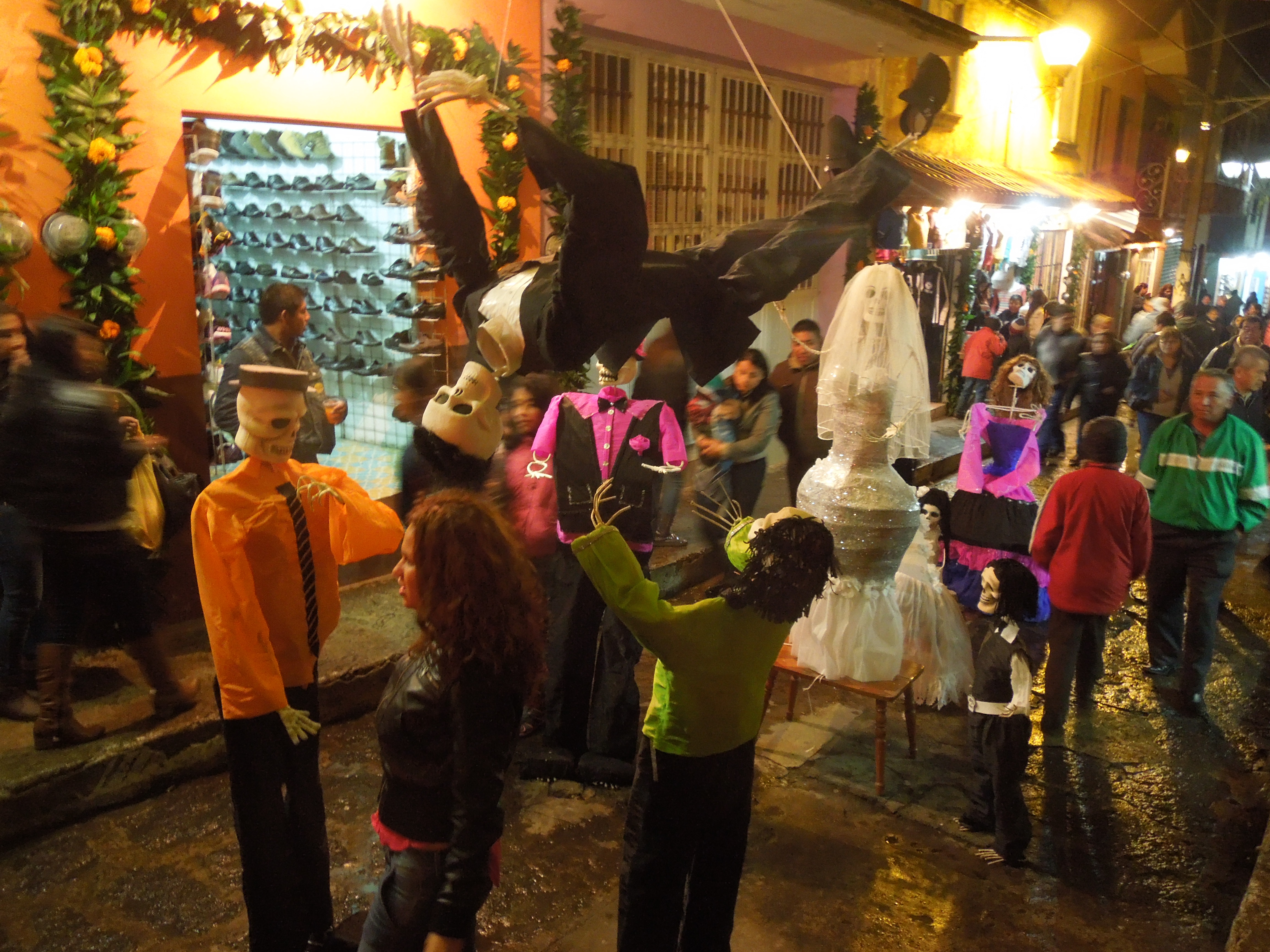
Make your way to the center of town to check out the impressive ofrendas, or altars, adorned with cempasúchil and other flowers, candles, and fruits and bread to feed the deceased.
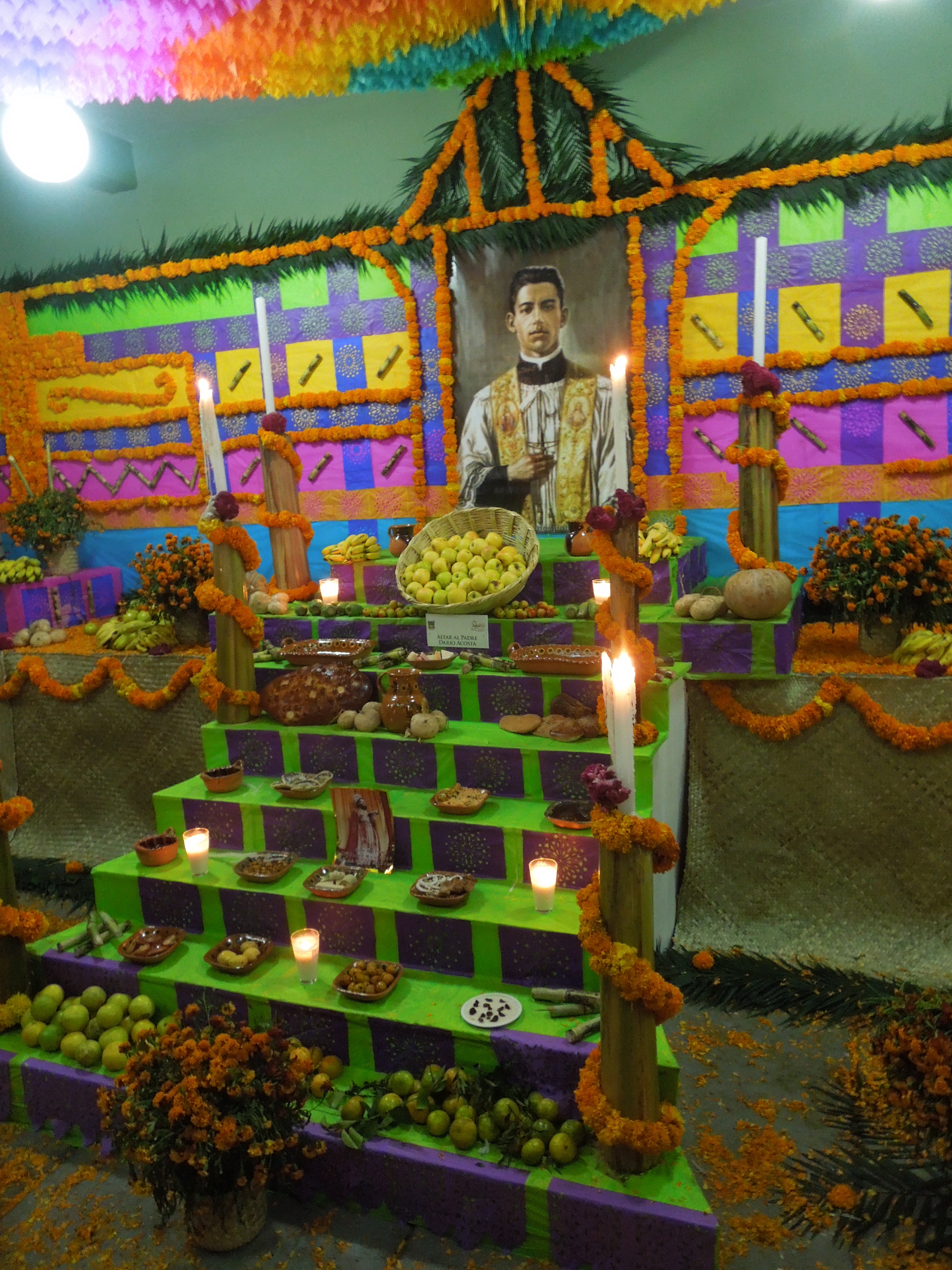
Some families leave their homes wide open to display their own extravagant ofrendas and ceiling arrangements of papel picado, which is a colorful paper cut into intricate designs. You’ve probably seen it in Mexican restaurants. A trail of cempasúchil flowers guide the dead from the entrance of their home to the feast that awaits them at their ofrenda.
The most unique Day of the Dead tradition in Naolinco is called La Cantada. Residents walk to the cemetery and sing emotional songs to their deceased loved ones. It sounds almost like a chant. The leader calls out a verse, and a group responds with a chorus.
Anti-Halloween propaganda is posted all over town in an effort to preserve traditions. You’ll find creative drawings all over the place warning you to “say no to Halloween”, so don’t show up in your Halloween costume!
What to Eat, Drink, and Buy in Naolinco
Stop in a bakery to get some pan de muertos, the traditional sugary bread of the dead with some crossbones on top. It goes well with a cup of Veracruz’s world-class coffee from one of the cafes in town.
If you’re hungry, try one of their famous stuffed chiles or tamales. They’re also proud of their mole, which I think you can say about most towns in Mexico.
Naolinco is also famous for leather products, so be sure to check out some of the leather shops in town if you need some boots, a jacket, a belt, a wallet, or anything else.
If you find yourself in Naolinco during the daytime, you can check out some waterfalls in the beautiful mountains around town. If you’d rather not hike, there’s an overlook just 2 km from town with a view of 3 waterfalls: La Cueva, La Cazuela, and El Salto de Plata.
How to Get to Naolinco
You can take a bus from Xalapa with the company called “Transportes Banderilla”. You can type that name into Google Maps to find the exact location. Tickets to Naolinco should be around $30 MXN or ~ $1.50 USD.
Uber recently started service in the Xalapa area, so that is another option. I think Uber is safer than Taxis because you have the driver’s information and some other safety features available in the app.
Where to Stay in Naolinco
Plan ahead if you’d like to spend the night in Naolinco. There are only a few hotels in town: Hotel del Parque ($463 MXN or ~ $23 USD) and the more luxurious hotel/spa Hacienda San Fernando ($1,034 MXN or ~ $50 USD). Otherwise, you’ll have to make the hour trip to Xalapa, which has plenty of hotels to choose from.
2. Xantolo in the Huasteca Potosina Region, San Luis Potosí
La Huasteca refers to a vast, tropical region spanning from the Sierra Madre Oriental mountain range to the Gulf of Mexico. Today, this includes land in the Mexican states of Tamaulipas, Querétaro, Veracruz, Puebla, Hidalgo, Guanajuato, and San Luis Potosí.
Visit eastern San Luis Potosí to explore the tropical paradise of turquoise rivers, jungles, and waterfalls known as La Huasteca Potosina. It’s certainly worth a visit any time of year, but Day of the Dead festivities are especially impressive.
Historically, the Mesoamerican Huastec culture dominated the region, but few remain. Today, you’ll hear pre-Hispanic Tének and Náhuatl languages throughout the region, but the name of the Day of the Dead celebration, Xantolo, comes from Latin (Santo Sanctorum).
How do People Celebrate Xantolo?
Farmers plant corn, beans, and the iconic cempasúchil flowers in preparation. The celebration of death begins as the primary growing season comes to a close. People pay extra for smokeless candles made of pure wax, because smoke contaminates the air and the deceased will not be happy to return and visit a smoky ofrenda.
Traditional celebrations can last pretty much the entire month, but October 28th to November 3rd are the main events.
In any town in the Huasteca, you’ll find a parade of huehues, people dressed in satirical costumes of Aztec warriors, demons, skeletons, and old people. You’ll see them dancing down the streets, then continuing late into the night, with hand-carved wooden masks.
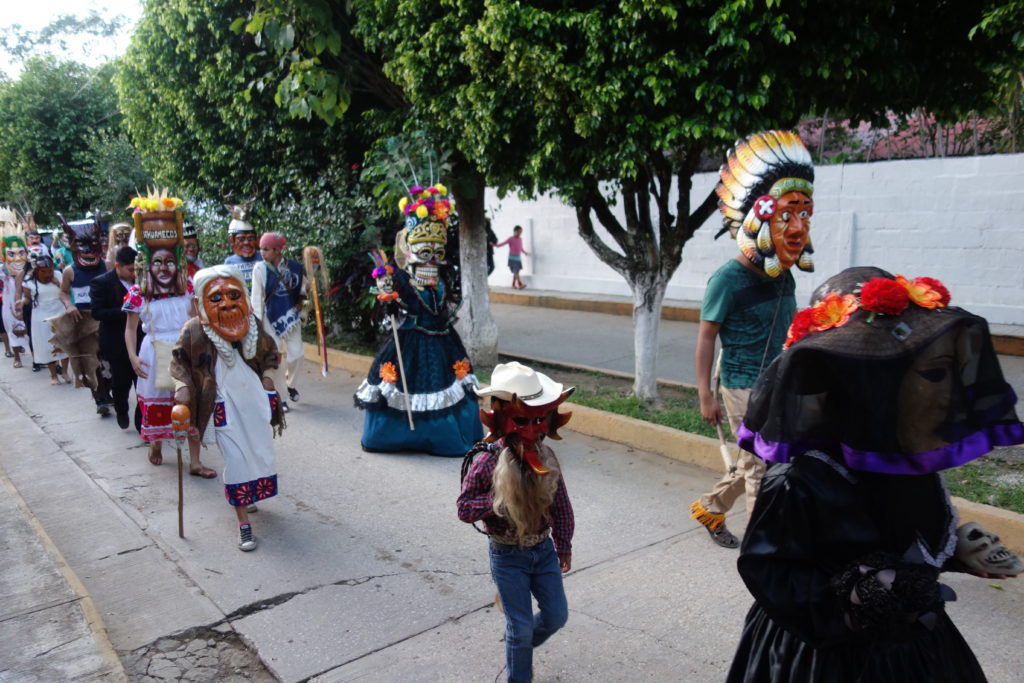
Violin, guitar, and a smaller stringed instrument known as the jarana create the genre known as son huasteco or huapango. A jovial fiddle sets the mood as singers call and respond, often with improvised, high-pitched chants mimicking the full range of the violin.
During Xantolo festivities, you might pull up a chair and watch dances of the huehues, often choreographed in school by each age group. Everyone dances in unison, but dancers with demon masks might stray from the group, trying to cause some chaos.
Or you might join the entire community and stomp on the wooden stage with everyone from small children to senior citizens.
The dance style is also known as huapango; A casual rhythmic stomping with minimal body movement as arms dangle by dancers’ sides. But when the fiddler breaks into a solo, the stomping intensifies in unison as dancers cover more ground and sometimes spin into a rhythmic swirl, never missing a beat. Partners engage in a coquettish intimacy, locking eyes and dancing around each other without ever touching.
El Castillo de la Salud Beto Ramón
The unique Castillo de la Salud, or Castle of Health, is a neat place to wander around. Located deep in the Huasteca in Axtla de Terrazas, it’s especially cool when it’s adorned for Day of the Dead. The original occupant, Beto Ramón Guadalupe, was a legendary Náhuatl herbalist whose healing powers were sought after by people around the globe.
Beto Ramón was a master of the rainforest around him, and he was known as “the healer who cured everything” using traditional medicine.
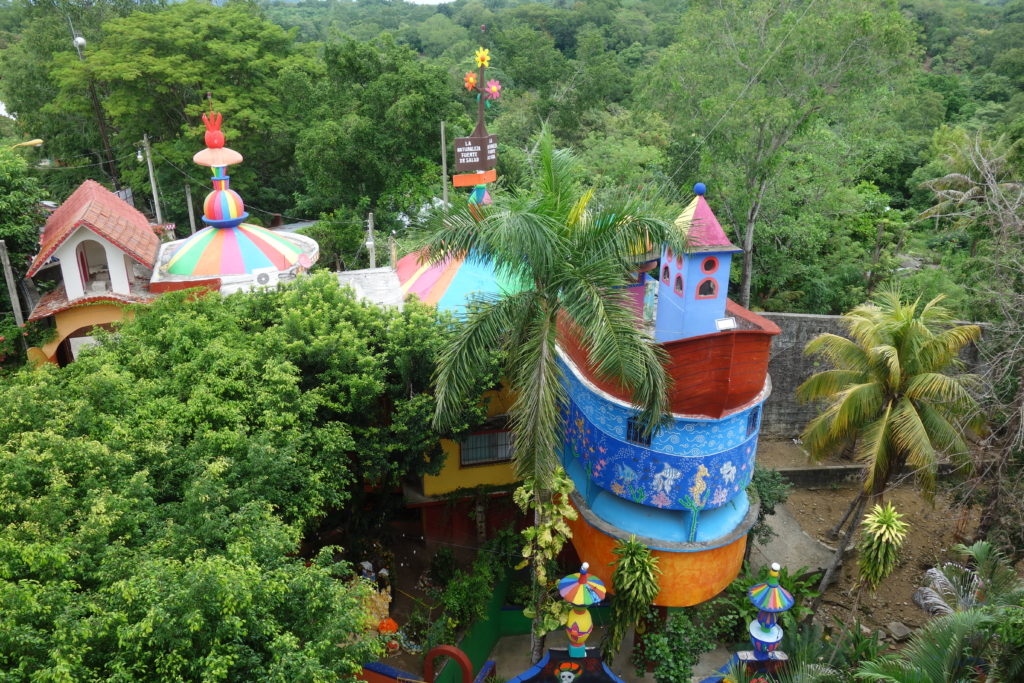
The eccentric castle makes a statement in the middle of the lush, green rainforest. You can wander the gardens, climb the towers, and stop by the shop to pick up an ointment to cure whatever aches and pains you’ve picked up during your travels. You’ll also find beautiful handicrafts, coffee, and typical souvenirs of the region.
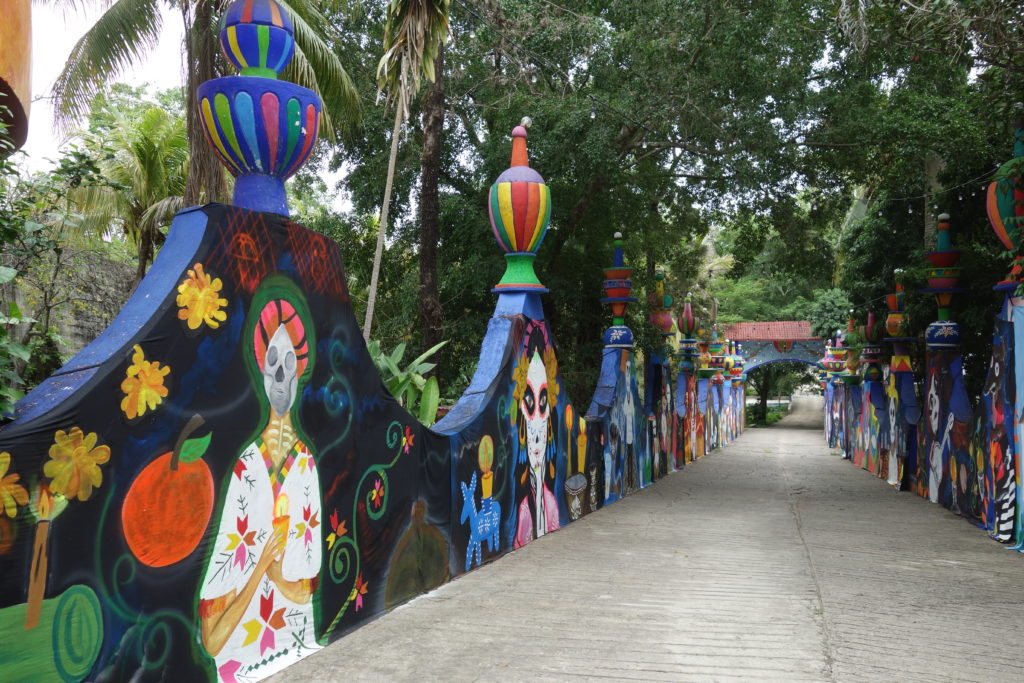
While you’re in the area, be sure to check out the Castillo de Edward James, where surreal structures merge with the rich jungle and waterfalls in Xilitla.
Where to Stay in the Huasteca Potosina
Tamasopo is a great place to stay near some beautiful waterfalls (Puente de Dios and Cascadas de Tamasopo) in the western part of the Huasteca Potosina. Hotel Cosmos is an excellent choice ($638 MXN or ~$31 USD) with a pool, and the food in the restaurant is top notch as well.
There is a surprising amount of hotels in the small town of Xilitla in the eastern Huasteca Potosina, popular for the surreal Castillo de Edward James. A few good ones include the Posada Familiar Tonantzin ($440 MXN or ~$22 USD) and the Hotel Jovita ($750 MXN or ~$37 USD). If you stay in Xilitla, get breakfast with a view at the Restaurante Cayo’s.
3. Festival de la Luz y la Vida, Chignahuapan, Puebla
According to the Aztecs, when a person dies, they go to Mictlán, the land of the dead. They hope for a superior destiny known as Tlalocan. But first, with the guidance of a Xoloitzcuintle dog, they have to cross a large, treacherous river called the Chignahuapan.
Chignahuapan is also the name of a Pueblo Mágico (Magic Town) in Northern Puebla, and every year they host a big spectacle for La Festival de la Luz y la Vida, The Festival of Light and Life.
On the evening of November 1st, the event begins in the center of town with intricate artwork of colorful sawdust covering the ground. At sunset, torches are lit to guide the way as everyone walks toward the Chignahuapan lagoon.
Grab some warm tamales and atole from one of the vendors, then find a spot at the edge of the Lagoon for a spectacle of fireworks, a glowing neon pyramid, and traditional Aztec dancers, floating in the middle of the lagoon!
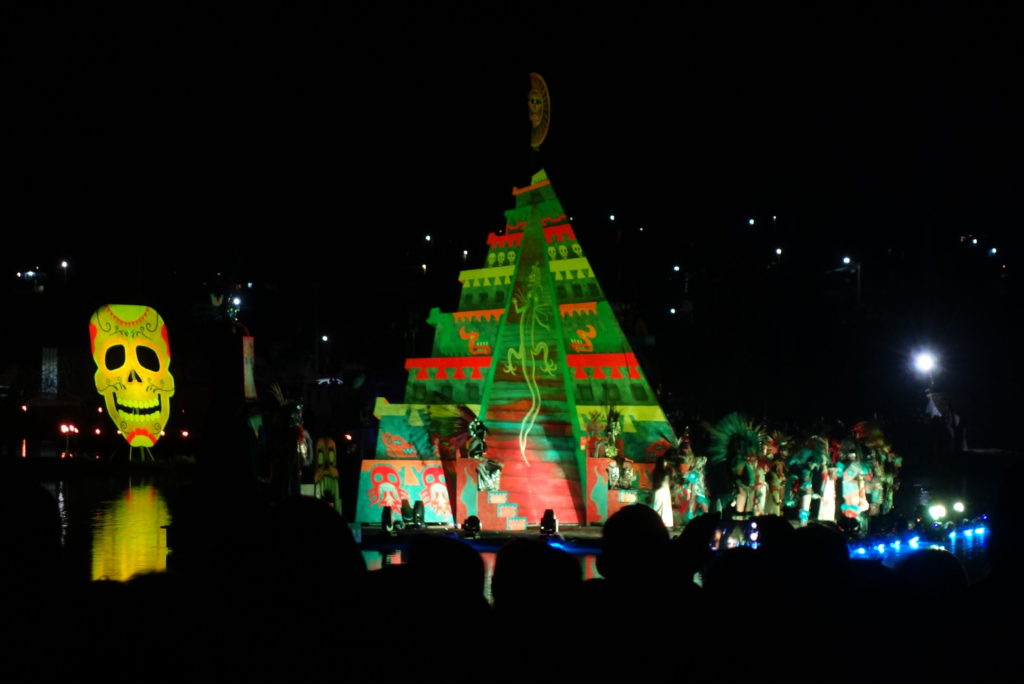
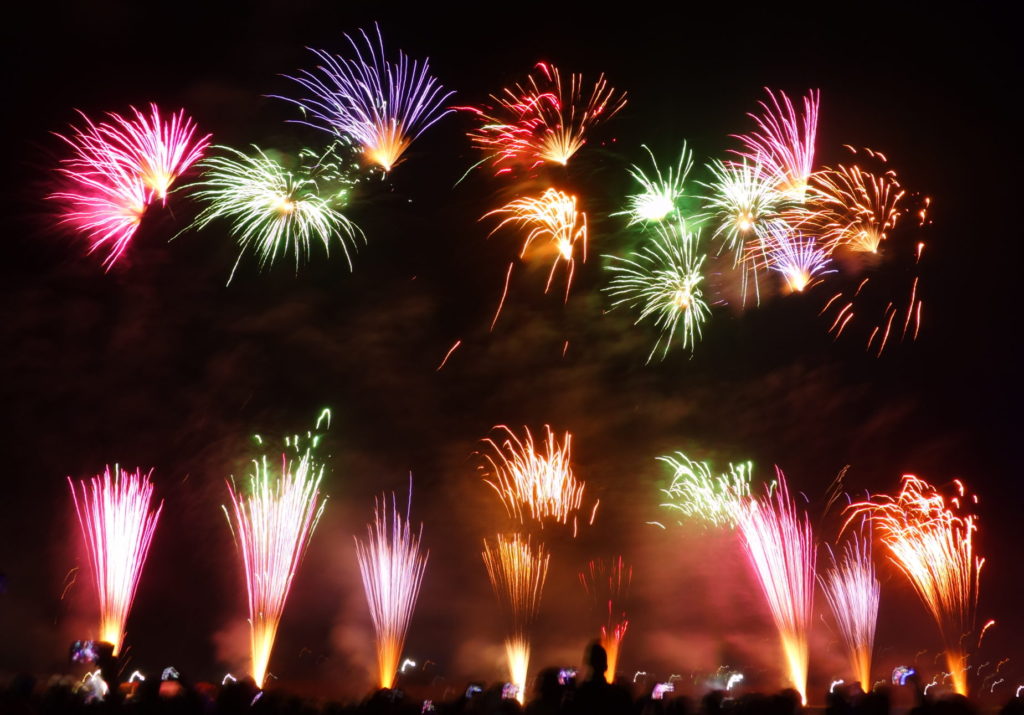
By the way, while you were in downtown Chignahuapan, you certainly noticed the biggest Christmas tree you’ve ever seen, in addition to other Christmas decorations. Be sure to buy some locally hand-made glass ornaments and return a couple months later for the Christmas festivities!
Where to Stay in Chignahuapan
A luxury option right next to the lagoon is the Hotel 9 Manantiales ($1,439 MXN or ~$70 USD).
Chignahuapan also has several budget-friendly hotels to choose from in town, but make sure you reserve in advance because they do tend to fill up for Day of the Dead festivities. Just a short walk from the lagoon are the following: Hotel Santa Fe ($399 MXN or ~ $20 USD), Hotel Márquez ($466 MXN or ~ $23 USD), and Hotel Tlatoani ($500 MXN or ~ $25 USD)
There are some relaxing hot springs in a forest on the outskirts of town with plenty of hotel rooms. I’ll be honest, they charge a lot by Mexican standards ($2,599 MXN or ~$125 USD per room). However, the price includes 3 meals, access to a guest-only thermal pool, a private little hot tub in your room, and they even do campfires and live music on weekends.

